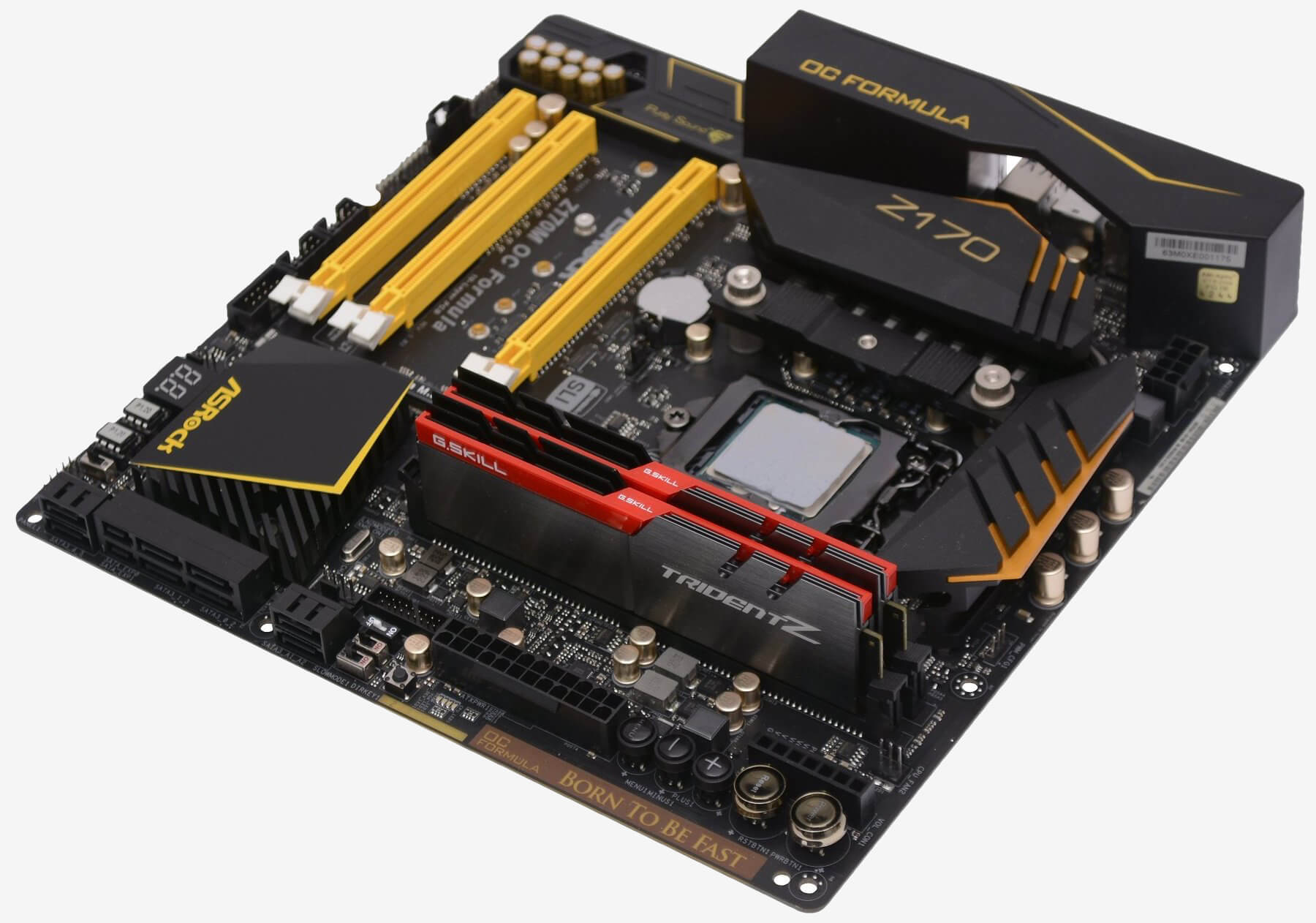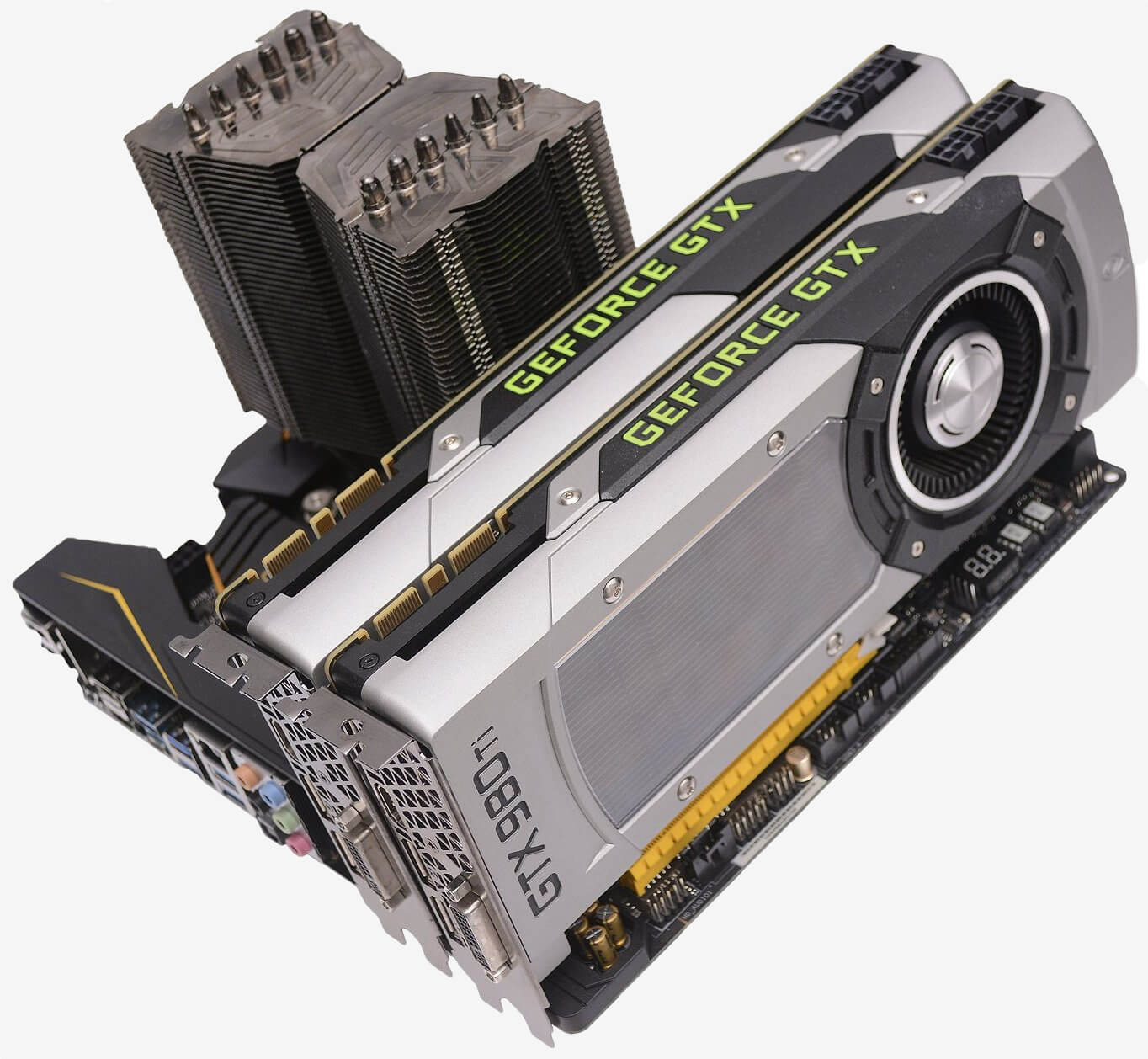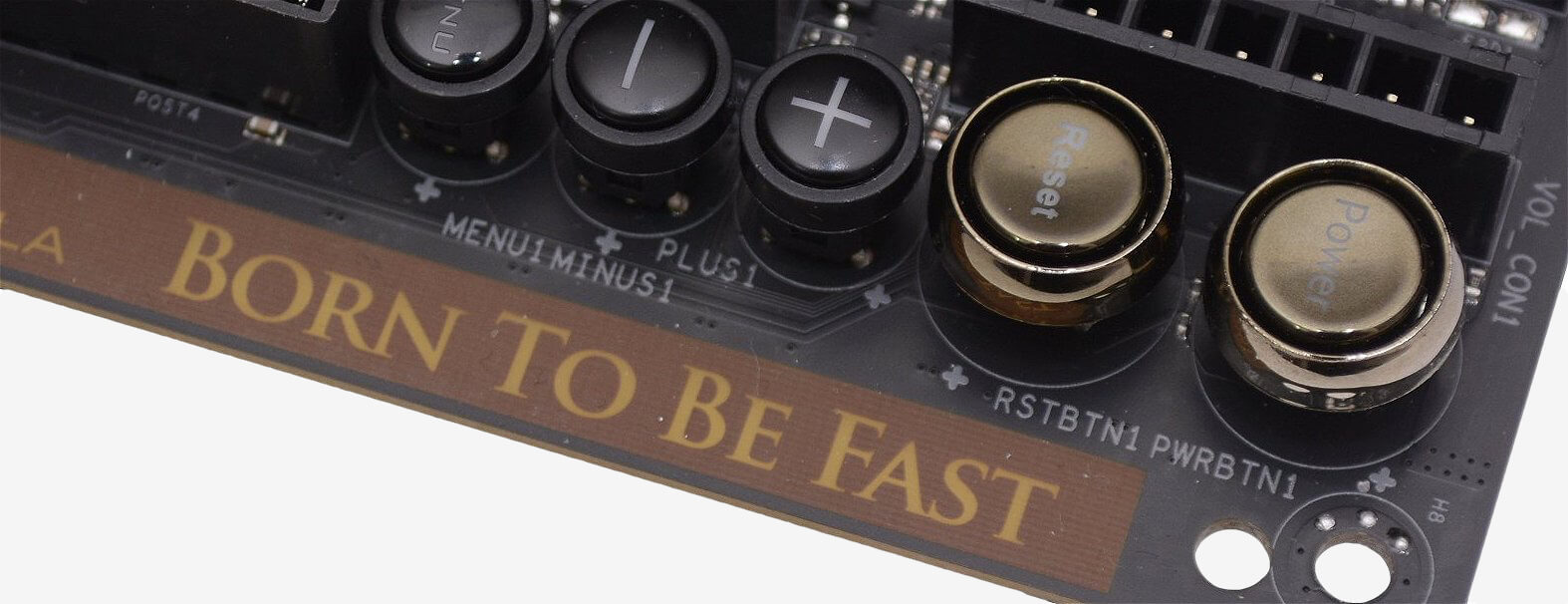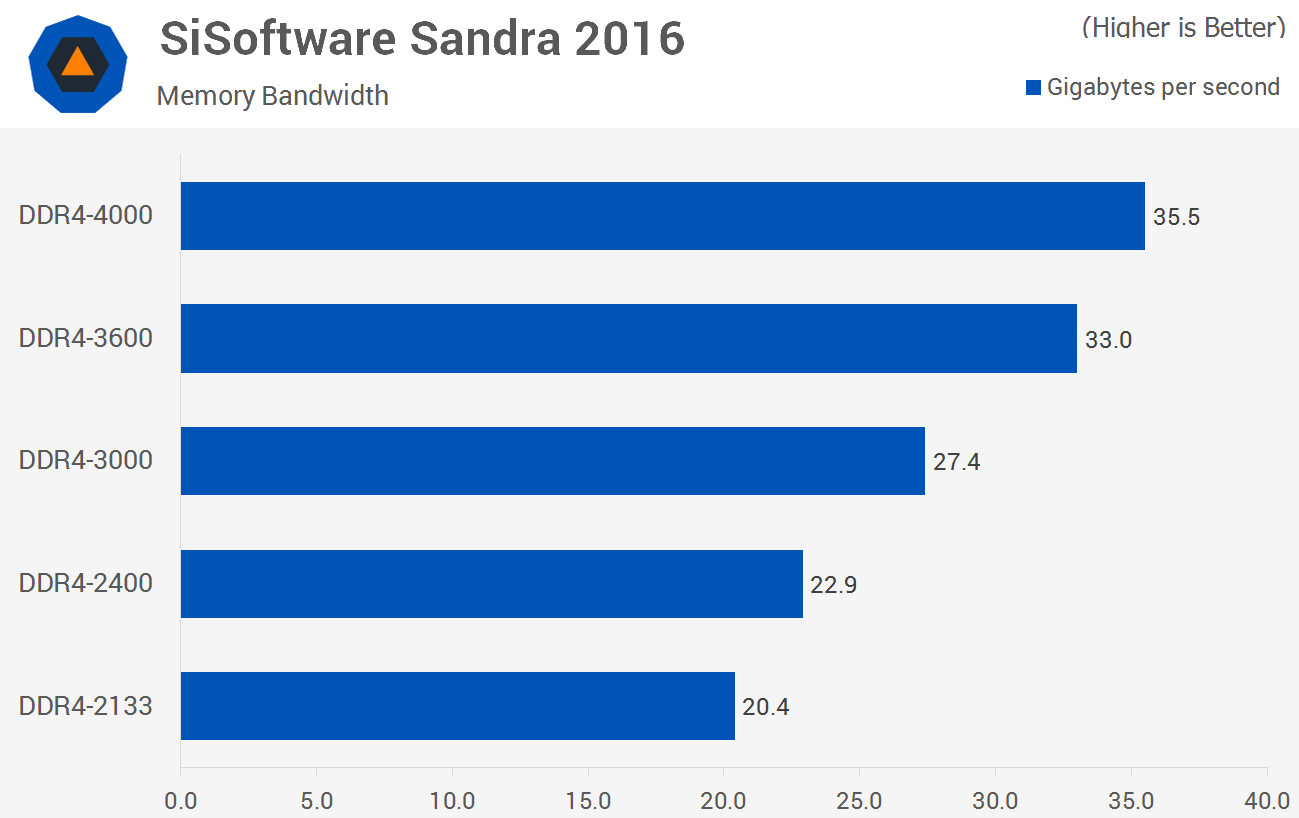Normally I don't pay much attention to e-mails that hit my inbox from manufacturers claiming that a certain motherboard can Anal sex moviesoverclock a Skylake Core i7 processor the highest, or that they have claimed the 3DMark record. They are in my mind boring marketing tactics that mean little to nothing to the consumer.
Last month I received one such e-mail from Asrock that nonetheless caught my attention. It claimed their Z170M OC Formula was the only motherboard to support G.Skill's Trident Z DDR4-4333 modules. Initially I thought, how useful is that? Are there even any benefits from running DDR4 memory on the LGA1151 platform that high?
For the most part we test using DDR4-3000, as it occasionally shows some benefits over the more typical 2400 and 2666 speeds. Going to 4000 MT/s (2000MHz) and beyond is a massive increase in frequency (and cost) and I struggled to imagine where this would be useful, particularly when gaming. Then again, curiosity had gotten the better of me...

So I asked Asrock to kindly send along one of their Z170M OC Formula motherboards. Disappointingly, G.Skill didn't have any DDR4-4333 memory available and a month later we are yet to see any go on sale, so this news report is appearing more and more like a marketing exercise.
However, G.Skill did come back and say they could provide an 8GB kit of their DDR4-4000 memory which is available for purchase. It isn't the record setting DDR4-4333 memory, but at 4000 MT/s it doesn't fall far short and will certainly give us a clear indication of whether or not this kind of high frequency memory holds any merit.

Currently there are a few DDR4-4000 memory kits available from the likes of G.Skill, Corsair and GeIL. Of those G.Skill's TridentZ modules appear to be capable of the best timings at 19-21-21-41 vs. 19-23-23-45 from Corsair, while the GeIL kits are even slacker at 19-25-25-45.
For testing we'll be using a few select applications and games comparing the Core i7-6700K at various memory speeds ranging from 2133 MT/s up to 4000 MT/s. Helping to maximize gaming performance will be a pair of GeForce GTX 980 Ti graphics cards, if they aren't able to exploit the potential of DDR4-4000 we fear nothing will be able to. With that said, let's get down to business.

|

Starting at DDR4-2133 we see a throughput of just 20.4GB/s which isn't bad but less than what we were seeing from the Haswell processors out of the box. Increasing the memory frequency to 2400 MT/s boosted the memory bandwidth by 12% to 22.9GB/s which is typically what we were first seeing from the Haswell processors.
Going from 2400 MT/s to 3000 MT/s , the speed which we regularly test at, boosted the memory bandwidth by another 20% to 27.4GB/s. Surprisingly taking the next step to 3600 MT/s boosted performance significantly yet again, this time by another 20% as we hit 33GB/s. Final stop at DDR4-4000 saw the memory bandwidth reach 35.5GB/s making it 8% faster than the 3600 MT/s configuration. While theoretical, the first benchmark shows some promise, shall we go real-world?
(Editor: {typename type="name"/})
 Luna Lovegood reveals her Patronus on Twitter, and she's not happy
Luna Lovegood reveals her Patronus on Twitter, and she's not happy
 Jamie Lee Curtis wasn't so down with FIJI Water girl's photobombing efforts
Jamie Lee Curtis wasn't so down with FIJI Water girl's photobombing efforts
 PewDiePie's new milestone proves his T
PewDiePie's new milestone proves his T
Today's Hurdle hints and answers for April 29, 2025
 If you like playing daily word games like Wordle, then Hurdle is a great game to add to your routine
...[Details]
If you like playing daily word games like Wordle, then Hurdle is a great game to add to your routine
...[Details]
Americans over 65 share the most fake news, study says
 The only people left on Facebook are the people who are worst at using it.A new study from Princeton
...[Details]
The only people left on Facebook are the people who are worst at using it.A new study from Princeton
...[Details]
'Captain Marvel' has highest first day ticket sales of almost any Marvel movie
 Captain Marvel, the hero poised to save our Avengers post-Infinity War, is already proving herself o
...[Details]
Captain Marvel, the hero poised to save our Avengers post-Infinity War, is already proving herself o
...[Details]
This mysterious tweet from the official 'Harry Potter' site is intriguing the internet
 LONDON -- The internet loves a good mystery, and that goes double when it's a Harry Potter-themed on
...[Details]
LONDON -- The internet loves a good mystery, and that goes double when it's a Harry Potter-themed on
...[Details]
Creator job opportunities grew 7x in recent years [April 2025]
![Creator job opportunities grew 7x in recent years [April 2025]](http://n.sinaimg.cn/translate/766/w960h606/20180730/ODmf-hfxsxzh9440980.jpg) If you want to be a creator, I have great news for you: There are plenty of jobs.Creators are now th
...[Details]
If you want to be a creator, I have great news for you: There are plenty of jobs.Creators are now th
...[Details]
Paul Hollywood is staying on 'Bake Off' and everyone is making the same joke
 LONDON -- In times of increasing turmoil, fans of the original Great British Bake Offformat have one
...[Details]
LONDON -- In times of increasing turmoil, fans of the original Great British Bake Offformat have one
...[Details]
Lady Gaga apologizes for collaborating with R. Kelly, pulls duet from streaming
 Lady Gaga is pulling her 2013 song with R. Kelly, "Do What U Want (With My Body)" from streaming ser
...[Details]
Lady Gaga is pulling her 2013 song with R. Kelly, "Do What U Want (With My Body)" from streaming ser
...[Details]
Razer's Hypersense concept gaming gear has built
 Game controllers have had rumble or vibration since Nintendo created the Rumble Pak for the Nintendo
...[Details]
Game controllers have had rumble or vibration since Nintendo created the Rumble Pak for the Nintendo
...[Details]
How to Easily Make iPhone Ringtones Using Only iTunes
Here’s what you need to know from CES 2019 Day 2
 The second day of CES 2019came and went, leaving plenty of noteworthy tech news we’re still ta
...[Details]
The second day of CES 2019came and went, leaving plenty of noteworthy tech news we’re still ta
...[Details]
Best roborock deal: Save $400 on Q5 Pro+ Robot Vacuum and Mop

German authorities have identified Angela Merkel's hacker

接受PR>=1、BR>=1,流量相当,内容相关类链接。